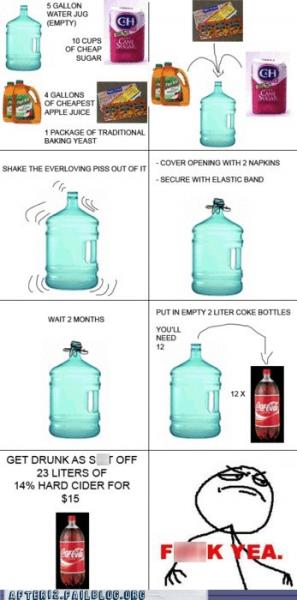I suppose that's accurate, but the real question is what the "suspended apple particles" are actually composed of. If they are truly particles of apple fibers, that would sediment out as the juice sits in the original packaging. It is proteins and pectins that generally stay in solution (as well as yeasts/bacteria, but you should be free of those until adding intentionally).
A generous dose of pectic enzyme (available at your LHBS) will help the pectins break down and settle out. Yeasts will flocculate out of solution on their own once they eat up the digestibles if given enough time (from your dry FG, I'm thinking you don't have a suspended yeast issue here).
Proteins are much more difficult to deal with and are generally dealt with in one of three ways: filtering (not really worth the bother for apfelwine - and could aversely affect aging), cold-crashing (always worth a try before bottling if you have the fridge space or a cold river/pond), and fining. If you choose to fine your apfelwine, some of the beer finings could work well, although I'd recommend the wine-focused finings, such as ClarityFerm that don't require any boiling to work properly.
Finally, if you still have any issues, adding yeast nutrients (compare to mead recipes for amounts/types to add) can significantly help the yeast to chew through anything extra that might be in solution (helps with fermentation odor too).
I've been working through the entire thread to put together a summary FAQ and have been noticing a pattern with the "apple flavor" comments. It appears that most of the people here making apfelwine are primarily beer brewers rather than wine vintners. Many first-time batches are accompanied by the complaint of little apple flavor....and in subsequent batches from the same people, it's less of a complaint. I suspect that many are expecting a relatively bold "apple juice" flavor rather than the much thinner and more watery (certainly less fragrant) flavor of young apfelwine. Once these brewers have passed the "third glass" test or brewed a couple of batches, they are commenting on delicate apple flavors and aromas with the initial tartness, rather than complaining about a lack of flavor. Yeasts are certainly a factor too - from the comments, it seems that Montrachet scrubs out more apple flavor initially than some of the other options. Red Star comments on Montrachet's likelihood of needing to manage sulphur production - perhaps the sulphur counters some of the apple flavors/scents? (I'm not an organic chemist...just a guess.)
Heh...np. BTP = Beer Tools Pro. You also might see abbreviations for other brewing sotware: BS = BeerSmith (any version); BS2 = BeerSmith v2; PM = ProMash; BW = Brewer's Warehouse website. Any of these can be used to calculate predictions in your brews, but accurate input data on the ingredients is crucial.






